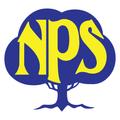Wellbeing News

Football Colours Day
A huge thank-you to everyone who participated in the day. It was great to see so many blue and white stripes around the school. We are pleased to announce that our efforts resulted in a donation to the Fight Foundation of $250.00. A big thank you to our student wellbeing leaders who supported this activity.
Headlice
Spring is here and headlice have returned as they have since our school opened 75 years ago. Head lice is not a notifiable condition and head lice do not transmit any infectious diseases. Head lice are transmitted by having head-to-head contact with someone who has head lice.
- Head lice are small, wingless, blood sucking insects.
- People get head lice from direct hair-to-hair contact with another person who has head lice.
- Treatment involves a lotion applied to the head of the person and washing of the person's pillowslip.
Insecticide resistance can occur, repeated treatment with different product can help with this.
Please read information on the following website to find out more about headlice.
Roll of the school:
Identification of Headlice
There is no requirement for schools to undertake head lice inspection programs. However, we can undertake visual checks without physical contact if we notice live healice or students itching their heads.
Head lice inspections involving the physical examination of a student:
- require parent/carer consent
are made by people authorised by the principal, for example, teachers.
When a student is identified with live head lice schools must:
- inform parent/carer that their child may have head lice
- exclude the student from school until the day after treatment has commenced, as set out in the Public Health and Wellbeing Regulations 2019, school exclusion table – refer to the health.vic website: School exclusion table.
Note 1: the principal has the overall responsibility to exclude a student from school.
Note 2: the presence of eggs in the hair is not a cause for exclusion (only live head lice).
Note 3: there is no requirement for a general practitioner or local council to issue a clearance certificate in order for the child to return to school.
Further information about head lice checks in schools and examples of documents to use are available in the Department of Education’s Head Lice policy.
Parents are encouraged to frequently check their children for head lice using inexpensive white hair conditioner on dry hair. This type of regular inspection by parents will help control head lice in our community.
A story to share with your children:
Treatment for head lice
The 2 preferred treatment options available for initially treating head lice are the ‘conditioner and comb’ method, and the use of an insecticide.
Any head lice treatment product you choose should carry an Australian Registered (AUST R) or Australian Listed (AUST L) number on the outer packaging. These numbers show that the product is accepted by the Therapeutic Goods Administration for supply in Australia.
If you use a lotion, apply the product to dry hair. For shampoo products, wet the hair, but use as little water as possible.
Head lice live in the hair and go to the scalp to feed. Therefore, head lice products must be applied to all parts of the hair.
Once the treatment has been done according to the instructions on the packet, comb through the hair again with the fine-tooth head lice comb. This will help to remove the dead eggs and lice, and possibly any eggs still living.
